Released under a Creative Commons Attribution-ShareAlike 3.0 license. All Creative Work Is Derivative by Nina Paley, is the second meme of our Minute Memes series. It was supported by a grant from The Andy Warhol Foundation for Visual Arts.
View at YouTube or download high resolution and OGG formats at the Internet Archive.
Subtitles:
Message: All Creative Work is Derivative.
Why: Copyright control extends not just to verbatim copies, but to “derivative works.” This has led to censorship on a grand scale. For example, the seminal German silent film “Nosferatu” was deemed a derivative work of “Dracula” and courts ordered all copies destroyed. Shortly before his death, author J.D. Salinger convinced U.S. courts to censor another author who transformed his characters. And so on.
The whole history of human culture evolves through copying, making tiny transformations (sometimes called “errors”) with each replication. Copying is the engine of cultural progress. It is not “stealing.” It is, in fact, quite beautiful, and leads to a cultural diversity that inspires awe.
How: On January 6, 2010, I emailed my Free Culture Lunch friends:
Who wants to join me on a Free Culture field trip to the Met Museum? It’s research for “Minute Meme #(2): All Creative Work Is Derivative” ( http://questioncopyright.org/minute_memes ). Where better to see real, historical examples of art influencing other art than the Met?
The goal would be to find clear examples of visual language evolution. The Met is huge, so we could split up and then regroup to discuss our finds. Or we could all look at one part together, discussing as we go along. I think they allow photography as long as there’s no flash. It would be educational, anyway, and that’s good, right? I almost never go to museums and I live in New York.
I was very affected by a South Asian sculpture exhibit I saw at the Met years ago (I was early in producing “Sita” and still seeking Ramayana art) which made it very clear how ancient Greece and India were cross-pollinating each other. There was one period in which Greek and Indian sculpture were almost indistinguishable. This is especially striking since we’re taught “Western” and “Eastern” history are separate; when the British colonized India centuries later, it was like a lost exotic land to them. That was just one tiny little part of the giant Met, and unexpected….
And so, on January 17, it came to pass:
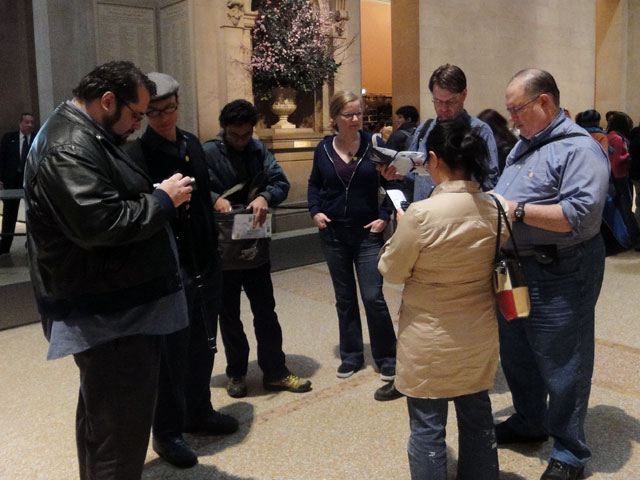
Clockwise from Left: Mike, Robert, Sundar, Caroline, Kai, Barry, Winnie. Jenn arrived slightly later.
In an heroic effort, I managed to run through the Greek/Roman, Asian (South, South East, and Central) and Medieval European galleries. I took 482 photos that day, not knowing exactly what I was looking for. I spent the following week going through each photo, adjusting levels and contrast, and wondering what I’d do with them. Gradually I saw the possibility of animating continuous movements using poses from historical works. The photographs I had weren’t sufficient, which led me to return to the Met by myself on January 26. This time I had a better idea of what kind of photos I wanted: “full-body” shots of specific poses. I took 432 more photos, this time covering Egypt, Oceania, and the Americas.
914 photos total. I carefully examined and adjusted almost every one. 435 of them made it into a folder called “Poses,” where I sorted them into categories: Standing, Sitting, Kneeling, Walking, Couples, Dancing, Running, Angels, Christ/Cross, Madonnas, Animals, and Other. Some of those categories obviously didn’t make it into the finished movie; for example, these Madonnas:

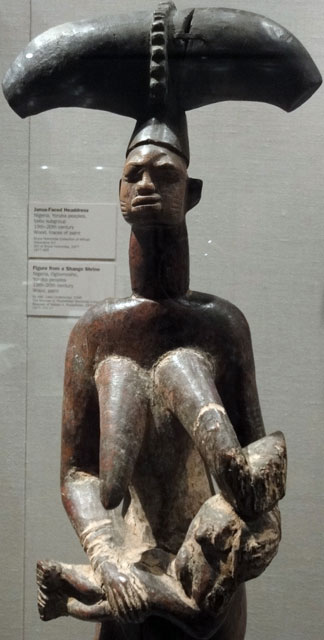
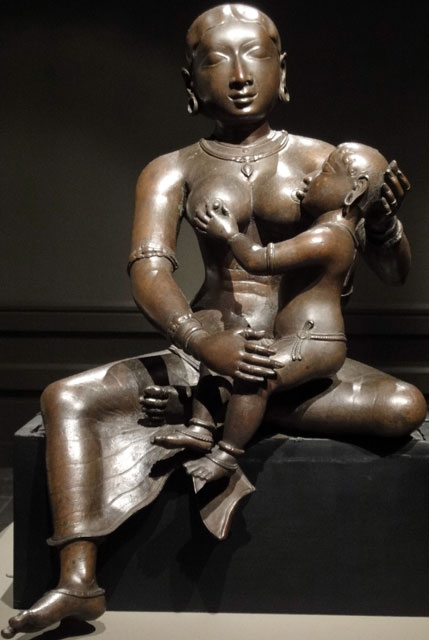

Once I sorted the poses, I masked them in Flash (tracing by hand with my trusty Cintiq stylus) to give them a clean vector edge. If I’d removed the backgrounds in Photoshop, they’d have pixellated edges, which would look “buzzy” in the finished animation.
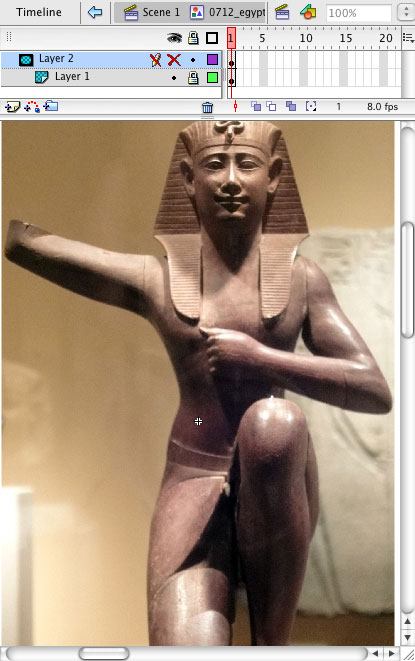
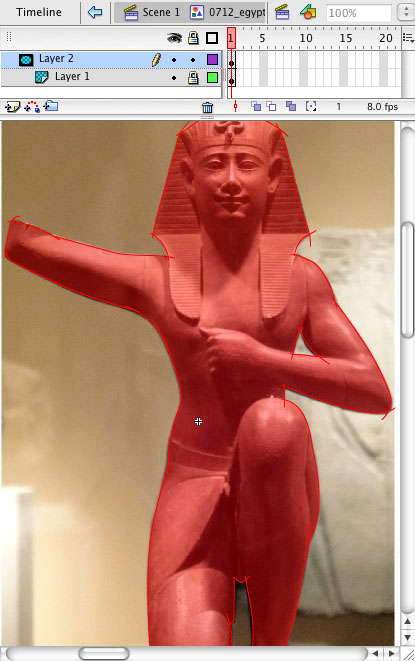
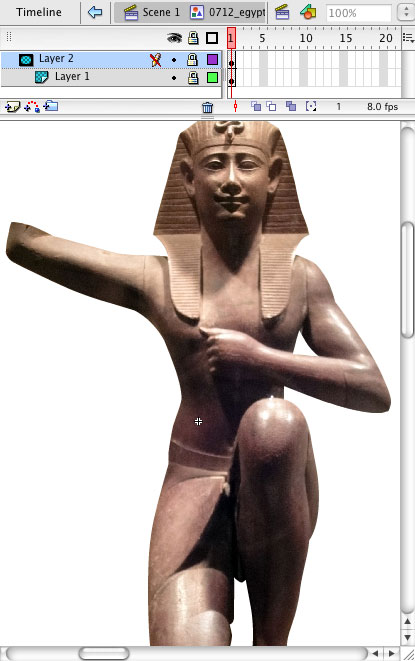
Although I didn’t mask all of the photos, I did mask many I didn’t end up using. But once I found the right ones, it was pretty easy to put everything together. 112 photos made it into the finished piece (my counting is fallible, it may be slightly more or less, but I counted 112 in the Flash file’s Library.)
I animated on 3’s, meaning 3 frames per image/8 images per second (at 24 frames per second). Usually I animate on one frame per image/24 images per second, so animation-wise, this is in some ways my crudest, choppiest film. But the frame rate needed to be slower to give the eye enough time to see some of the detail in each photograph.
The whole movie is a single “take.” There are no cuts, zooms, pans, scene changes, or closeups. It’s usually hard to sustain interest without such editing techniques, but in this case they would have confused the eye and muddied up the experience. This movie demands a lot of concentration from the viewer, and too many tricks would distract more than help.
The music is Sita’s String Theory by genius Todd Michaelsen, who composed much of the score of Sita Sings the Blues. It is a “bonus track” he contributed to the upcoming official soundtrack CD. While listening through the entire CD master at Greg Sextro’s studio, I realized Sita’s String Theory would make a fine track for All Creative Work Is Derivative. It was CC-BY-SA licensed already, making it legally compatible with the project. Its beat is a denominator of 24fps, so it would work with my animation. And of course it sounds wonderful.
One person’s “influence” is another’s “infringement.” A time-travelling IP lawyer could find all kinds of infringements at the Met. Greeks, Egyptians, and South Asians influenced each other heavily; was this “borrowing,” “stealing,” or “copyright infringement?”
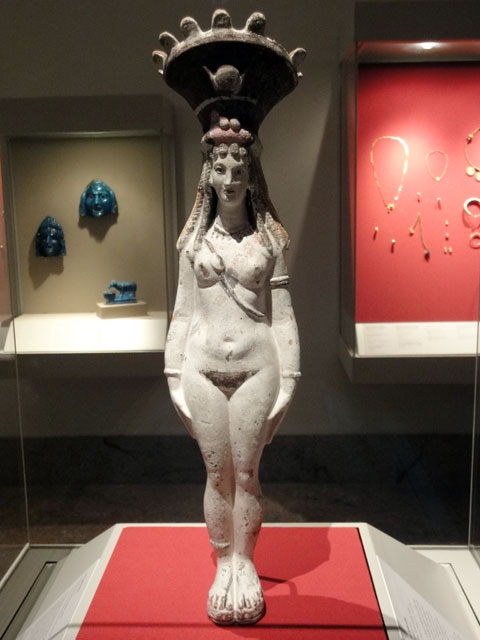
This chick is an Ancient Egyptian!
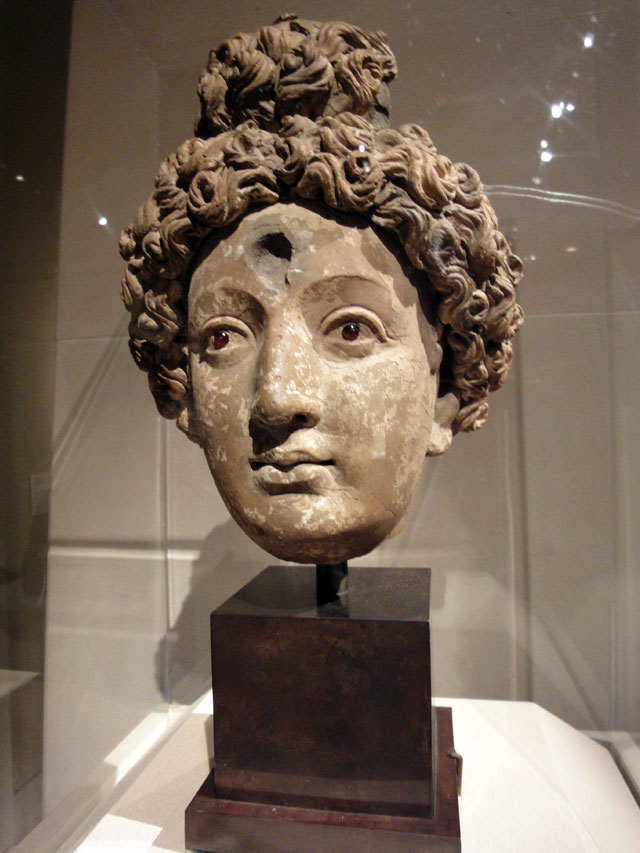
Does this head look Greek to you? Well it’s from what is now Pakistan.
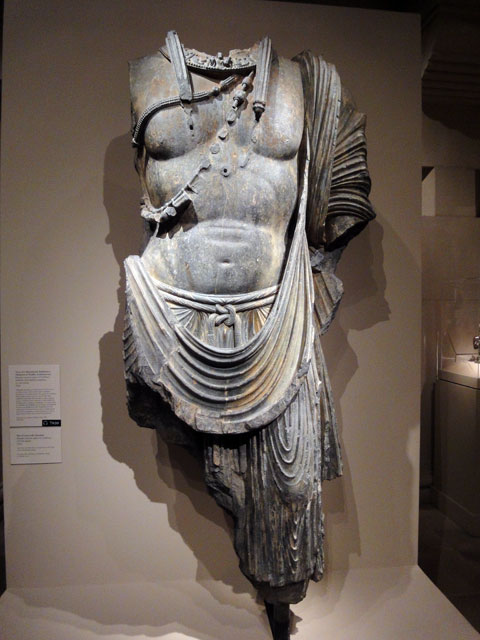
Same with this headless dude.
And whose idea was it to put bird wings on mammals? Could the ancient Egyptians sue the ancient Greeks and Medieval Europeans for trademark infringement?

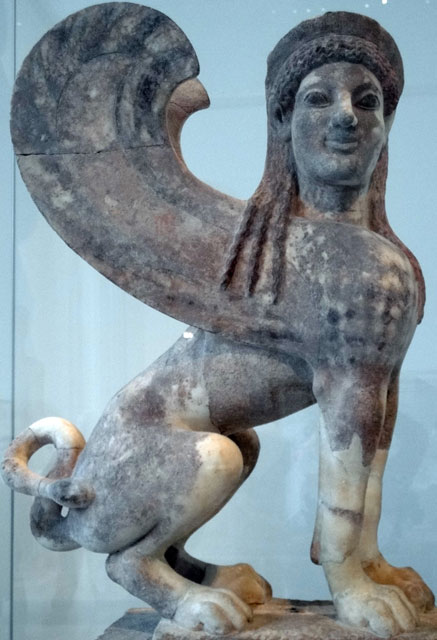
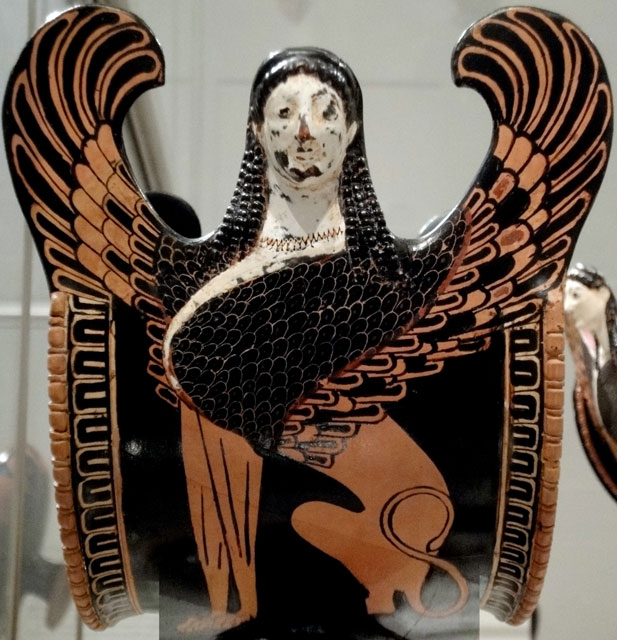
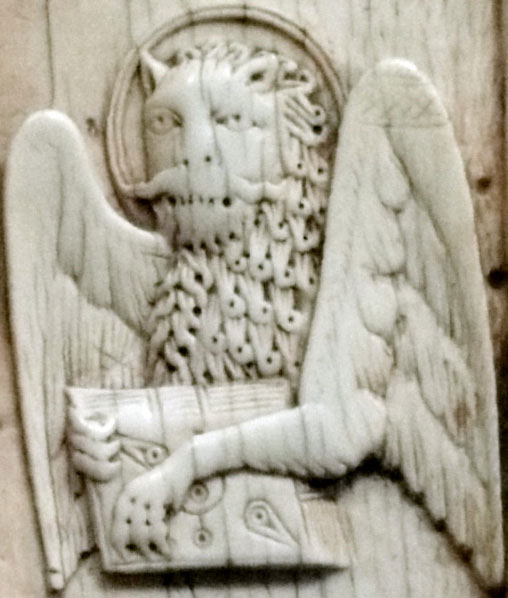
What derivations are transformative? Do we really want lawyers and judges determining what “transformative” is and is not? Do we want cultural progress dictated by the courts at all?
A copyright maximalist would say that this movie is uncreative, as though I used photos of old sculptures because I was too lazy to make my own. I didn’t use historical works because I’m lazy. But even lazy artists shouldn’t risk lawsuits, fines, and jail.
Or maybe the copyright maximalist would say this movie is creative, because I only photographed non-copyrighted works. But why should the legal status of the work I’m building on have anything to do with how “creative” my work is? The maximalist is working for the day when all works are copyrighted, and all culture is property. No longer shall anyone be able to build on works from the past, be it 5 minutes or 5 millennia ago.
Until that day arrives, I’ll see you at the museum.



Once again, thanks Nina and Question Copyright for a great piece of work.
-Chris
Spot on Nina. Way to animate your point.
Those statues are possessed. D:
Yes — by everyone :-).
Mesmerizing and thoughtful.
This is fantastic work. Copyright is getting seriously out of control, I think work like this definatley helps make think at the very least. If we are thinking we are winning.
Good stuff 🙂
Genius. Absolute genius. We’re developing an exhibition out here in London that will touch on this theme exactly….you could hardly have illustrated better frankly! I’ll keep you posted as it develops. Cheers!
Please do. See our contact page for how (and feel free to post comments here too).
wish we could be there…
i’m the mom 2
Altough Flash is a nice tool for animation, it’s very well possible to make soft edges in Photoshop. Just use a soft brush instead of the block eraser.
I don’t think copyright is getting out of control, its just that the publishers are getting desperate. They are desperately trying to hold on to their right to be the gatekeepers of our culture. However, the internet is proving that there is no need for such gatekeeping anymore.
EltonJ.
Great job !
Where can we find the credits of all “poses” used in the clip ?
The credit is surely “Met Museum exhibits”.
You’re missing the point. The similarities here are in themes and ideas, not in expression (at least not in all cases). No one can protect the idea of a woman nursing a baby, or even Mary nursing Jesus, or Jesus on a cross, or a man running or Buddha in a certain pose, through copyright, because those are only ideas. Copyright jurisprudence in the US is full of cases where people claimed some work was an unlawful derivative, and the court just says “nope, it’s just a similar idea.” As a matter of fact, the Ninth Circuit Court of Appeals just said as much last week in the Bratz v. Barbie case. So while this was an interesting exercise in exploring evolving themes in art, saying it’s representative of “unlawful” derivatives is a huge stretch.
Dear point-missing fault-finder: Do not think for a moment that that the concept of a madonna and child is the solitary idea in the creative work. Whether to use stone, metal or paint is an idea. How to pose the figures is an idea. The use of scale, balance, light, form, texture, color and depth are all ideas. The point is that everything that composes a creative work is someone’s idea, maybe even the artist’s–it is not mere execution or expression of the idea. Gerald Weinberg is quoted as stating that the three main sources of ideas are error, theft, and recombination. Without previous work to derive from, virtually all creativity would cease. The IP law is wrong beginning with its fundamental premises all the way through its mandatory threat of government violence to protect monied interests.
They’re also desperate to be paid. Which given the rhetoric of the freetards, oops – liberators! – is not so surprising.
I think I understand the argument, but how are artist’s supposed to make a living without copyright? I hate the idea of property in general, but the reality is that we, in the west at least, live in a system that revolves around a certain type of economics. Why should we penalize artists only? If the creative mind cannot devote their life to their craft because of financial stress, then they will end up doing some soul-draining job that leaves them no energy or time to create or master their art. All I’m saying is that if we want to debate the “property” issue, let’s do it all around. Why should anyone own land, or water, or electricity or any number of other things? Is art only singled-out into this debate because technology has made it so easy to steal without getting caught?
this thesis is soooo stretched. it lacks a knowledge of art history, and is confusing reinterpretation with copying.
you are over generalizing. history of human development is a process of one derivative from another, just like evolution is. but we still can make distinction from one species to another and say: this species is one and only and its original and not a copy.
it would be great to live in world without need for property. i would love to go to bakery and just take a bread without paying it and justify this with argument that this bread is just derivative of some earlier version of bread made around 10.000 years ago and the baker has no right to clam it his own.
In my experience, Flash has a hard time importing transparency from Photoshop. It ends up thresholding it instead of preserving the anti-aliased edges. So while Nina’s explanation was a bit incorrect, the end result is that she probably was better off doing the masking in Flash (or using something other than Flash for her compositing/staging, such as AfterEffects).
No it is not! Ever hear of P2P? It is related to copying. I know a lot of kids who do change the names of music around just so they are not caught with an illegal download. Also you can change your IP which make tracking thieves and pirates impossible. Learn about the internet. Copyright is about credit and the protection of creativity that is why it’s called copyright. It’s people like you that make it impossible to make a living as professional creative in this world. Your the reason why rates and royalties shrink. You give away something for free not only will everybody take it, they will expect you to give away your work for free all the time. Please quit trying to supress creativity the the protection thereof.
————————- Copyright isn’t about credit, it’s about copying. That’s why it’s called “copyright”, not “creditright”.testking 642-384
What inspiring words have you used, really surprised, i totally agree with you . Juan From d2, here we respectful about copyright, we wrote our own articles in sports for disable people. greetings.
What inspiring words have you used, really surprised, i totally agree with you . Juan From d2, here we respectful about copyright, we wrote our own articles in sports for disable people. greetings.
»
Anthropologically, reflecting one’s culture (in this case in art) is imperative for the success of the culture itself. Each individual within a culture reproduces parts of it, and the culture is made up of the sum of those parts. Innovation can arise, and swiftly becomes perpetuated by reproduction. I’m probably being overly pedantic, but in my mind there’s a difference between being derivative and reproducing culture – where the former involves actually taking someone else’s old idea and passing it off as one’s own new work, perhaps with changes; while the latter involves creating something within the structure of one’s cultural norms.
This is fantastic! Thank you so much. I’ve been talking about this very issue with some of my artist friends (and recently wrote a blog post about the creative evolutionary process, actually – pleading with artist friends to just be themselves!) I think many artists will agree with what you have said here. Please keep up the great work.
Love this writing, so much. Cheers.
Nobody claims that anyone should be able to reproduce work under thier own name. All anti-IP people I have seen say that claiming someone else’s work as your own is fraud(lying). You should be able to reprint the entirety of someone else’s book, but with their name on it.
Thank you so much. Why artists be blamed only. I hate the idea of property in all-purpose, but the reality is that we live in a world where things like “copyright” are become necessary. I am also an artist (Abstract paintings) and I agree with you but without copyright how are artist’s supposed to make a living.
I agree. Original artwork should be protected. I am also an artist (Abstract Paintings) and I think it is more than fair to have “Copyright” and be recognized.
Carmen
So, I sit on my fat ass and steal somebody’s manuscript on the basis that all art is derivative? I “recombine” all before me in my own image never having laboured with the vision or industry that put the original together. Never having felt the need or desire, never envisioned, never paid the price to give it birth. It all comes “fully formed” into my head by sheer reason of the fact that I can read. Nobody owns anything, I reason, and nobody really creates anything new therefore NOBODY CAN STEAL ANYTHING. And all is well with the world?
I need not even acknowledge the source of my derived concoction as “inspired by” or ” indebted to” or anything else because I haven’t really stolen anything. I am pure as the driven snow. I don’t need to proffer a cent to my victim either. I see him merely as a waiter who has served me ‘MY’ ideas on a silver tray to do with as I will. His mistake was that he thought he was a writer bringing forth something new and original, and I was his agent.
People like J.K. Rowling’s bloggers who infest the internet pleading ‘precedents’ and the like in her support never stop to consider the fate of all those she has dragged into court and sought to ruin on the basis that they had infringed ‘HER’ copyright. She has Schillings, one of the most expensive law firms on the planet to help her do it too and they do a ruthless job and are known for it; so ruthless, in fact, that even the owners of this blog might conceivably wince at the very sound of their name. No ‘precedents’ mentioned there dude in the law court by the prosecution or the judge as the criminal is pilloried in the dock for THEFT.
Ironic, don’t you think that her Potterite apologists argue in her defence that there is no such thing as intellectual property. All is apparently “derived” and “recombined” but never “stolen”, since theft, they believe, is impossible.
If you subscribe to these self-serving ideas of the ‘derivation’ of ideas then what is new and novel, be it a type of music, writing or painting that I have slaved over and dragged out of my soul is not really new or mine at all. It belongs entirely to those who can “derive” it from me in turn and who can afford enough heavyweight, legal muscle to protect their theft and conceal their crime from scrutiny.
Reasoning of the above sort leads us all back to the concentration camps where one’s very life belongs to those who have decided to claim it. After all, we are derived from our parents and cannot really plead exclusive ownership of our genes. Can we? Our very genes, our bodies, are the natural property of anybody and everybody. Isn’t that the logical conclusion of all this? Is this not the devilish mindset that drove millions of Jews into the gas chambers? Or, did we all miss something?
The classic crime of the ruling classes, according to Karl Marx, is the fundamental delusion binding them all together; viz, that they own EVERYTHING, including the products of men’s souls. Arguing on their behalf should not be something we should all rush into without examining what we are actually doing. I am happy to see that the Elgin marbles looted from Greece some centuries ago have been returned to their rightful owners, the people who created them. There may be hope for us yet.
if i’m a “freetard” than what does that make you
a “copyretard”?
This is great. I agree. Anthropologically, reflecting one’s culture (in this case in art) is imperative for the success of the culture itself. Each individual within a culture reproduces parts of it, and the culture is made up of the sum of those parts. Thank you.
I have to say that I strongly disagree with the assertion that “all creative work is derivative”. Obviously a vast amount of work is derivative to a greater or lesser extent, but by no means all of it.
Say I was to hover in a helicopter over the Amazon rainforest, sellotape the shutter down on my camera in multi-short sports mode, and throw it out the window clicking away, tumbling down through the rainforest canopy into a gathered throng of hitherto uncontacted indians in a village below. I think you would struggle to say that the resulting last few images recorded on the memory card before the camera smashed to pieces on the rainforest floor, were derived from anything at all. They would be fascinating pictures, and very creative, but not derivative of any former work. Even in the unlikely case that someone has done something similar before, I certainly haven’t heard of it, and therefore it is not legitimate to say my doing so would have been a derivative of that work.
I might have been “inspired” to do this for many possible reasons; maybe an anthropological interest, maybe a desire to test the resiliance of my Canon camera, or maybe just to disprove the “all creative work is derivative” lemma, but I challenge anyone that suggests that this work would have been “derived” from any other work that i have witnessed.
Any single exception to this lemma suffices to disprove it, but there are surely many.
Another suggestion…. what of the first few photographs from the first few photographers. Were they really derivative of anything? Joseph Niepce’s “View from the Roof”, the world’s first photograph – there was no crucifixion in it, or naked athlete running, or girl reclining, no human subject at all in fact. So you wouldn’t even be able to say its derivative based on your (IMO) loose argument that the pose of one of the human subjects (of which there is none) resembles that in a previous painting or sculpture.
The human body, by limitation of it’s joints and general DNA has a limited identifiable number of poses, say 10,000, so undoubtedly repetition arises amongst the trillions of artistic representations of the human form. This doesn’t however mean that one work duplicating another’s pose is a derivative, when that duplication might have been coincidental. In fact if the resemblance is coincidental, by definition it is not derivative.
I think it is defeatist to pronounce that All Creative Work is Derivative. Just because one person might feel unable to create something new themselves doesn’t mean nobody else can. To me it is up there with that other ongoing defeatist suggestion, that Photography is Dead.